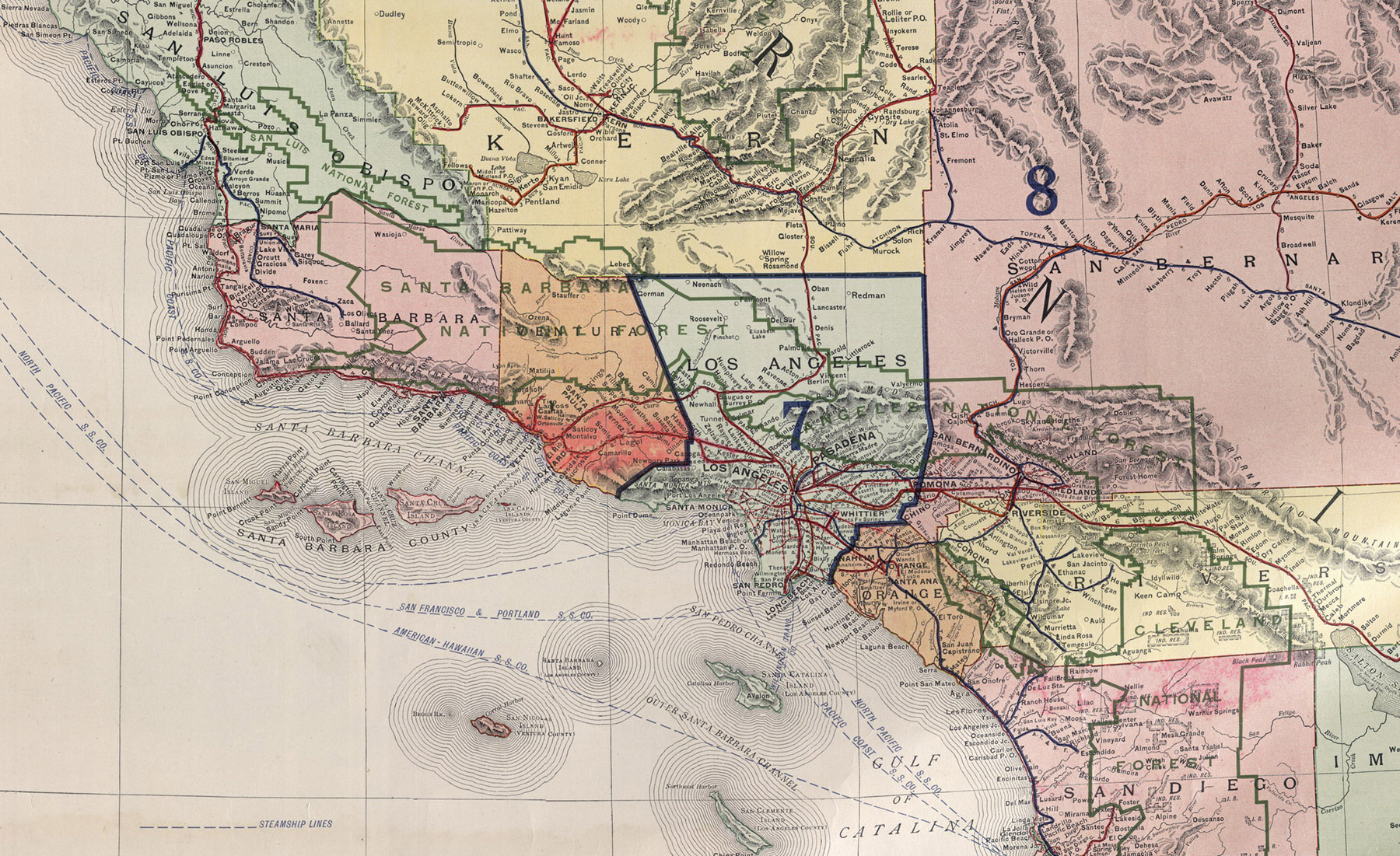
#195 Palm Springs Aerial Tramway
The Palm Springs Aerial Tramway rises 6,000 feet from the desert floor to the alpine forest through five diverse life zones. It is the largest rotating aerial tramway in the world. From the top to the bottom, the temperature can differ by up to 40 degrees making it the perfect escape during hot summers. On a clear day, the views stretch as far as 200 miles including Mount Charleston outside of Las Vegas, Nevada. Because of its engineering feat, it earned the nickname 'eight wonder of the world' when it opened in 1963.
#191 Arthur B. Ripley Desert Woodland State Park
Arthur B. Ripley Desert Woodland State Park preserves one of the last remaining strands of Joshua Trees in Antelope Valley. Native Americans used the trees as a source of food and material. During the Spring, Joshua Trees contain gorgeous blooms and provide a striking sight.
#183 Randsburg
Gold was discovered in 1895 at the Rand Mine and a camp was soon formed in this remote Mojave Desert enclave. Located near the other boom town of Johannesburg, the two names merged to spell Randsburg. With a population today of about 70, it is a true western ghost town. The famous General Store as well as its charming abandoned sites and sounds make it a must stop along the beautiful Highway 395.
#176 Salton Sea State Recreation Area
The Salton Sea is one of the most fascinating spots in Southern California. Created by accident between 1905-07 while trying the reroute the Colorado River, water seeped through diversion canals for two years and settled into the Cahuilla Valley creating a new sea. Being in the low desert, everyone assumed the water would evaporate; however, the sea had other plans. Recreational resorts sprung up and the Salton Sea became a thriving new Riviera and yacht paradise.
With its lack of moving water supply, the sea became extremely salty causing the introduced fish to die off in the thousands. The beaches are made up of salt and fish bones, needless to say, causing the area surrounding the sea to become undesirable and uninhabitable. Ghost towns surround the shores while bird watchers come to the recreation area to enjoy the variety of birds that use the sea as a stopover between flight. Prepare your noses for a bizarre visit.
#175 Twenty Mule Team Canyon
Twenty Mule Team Canyon in Death Valley National Park is a beautiful drive with colorful badlands and eroded cliffs. It was named after the famous 'Twenty Mule Team' of 18 mules and 2 horses who hauled borax in wagons out of Death Valley between 1883 to 1889. The trip was a difficult ten day, 165 mile trek across the Mojave. History lives on in this perfect symbolic spot of the Old West. *Please use caution on this dirt road in the desert
#170 Keeler Ghost Town
Keeler is a ghost town outside of Death Valley National Park in the Eastern Sierra Nevada known as the 'End of the Line'. The Carson and Colorado Railway extended their railroad all the way here during the Gold Rush in 1883. When nearby mining towns went bust, plans to extend the railway further to Mojave fell through and Keeler became the last stop of the line. The once-thriving adjacent Owens Lake was purchased by the city of Los Angeles who stole the entire water supply leaving Keeler high and dry.
#166 Shelter Valley
Directly along the historic Great Southern Overland Stage Route lies a magnificent valley known as Shelter Valley or geologically, Earthquake Valley. This desert valley, once home to the Kumeyaay Native Americans, is one of the most beautiful spots in all of Southern California. It is protected by Anza-Borrego Desert State Park and the Pacific Crest Trail passes through. Spring wildflowers dot the ground while mountains rise majestically in the background. With its clean air, light streams down and paints the ground and makes it the perfect spot for stargazing at night.
#163 Fossil Falls
Fossil Falls Scenic Area along the beautiful Highway 395 contains volcanic lava flows up to half a million years old. Basalt lava was sculpted by rushing water creating the smooth formations seen today. Native American artifacts have been found here dating from 12,000 to 3,000 years ago when the area was a wonderful place to live for its plants, animals and once abundant water supply.
#161 Kelso Depot
The Kelso Depot stands brilliantly in the middle of the Mojave National Preserve. Now a visitor center for the park, the depot has been a desert landmark since opening in 1923. It was an important railroad service stop for the Los Angeles & Salt Lake Railroad and was crucial during World War II for the war effort delivering key goods via Union Pacific. The National Park Service saved the depot from demolition when abandoned after passenger service ended in 1964 and restored it to its original glory. It continues to be a beacon of light for travelers in the desolate, yet stunning Mojave Desert.
#155 Palms to Pines National Scenic Byway
Palms to Pines National Scenic Byway is one of the most scenic drives in Southern California. From the desert ecosystem of Palm Springs and the Coachella Valley to the snow-covered peaks of the San Bernardino National Forest, this winding road takes you from sea level to peaks more than a mile high in pristine wilderness. Beautiful overlooks offer dramatic views that soar for miles.


























